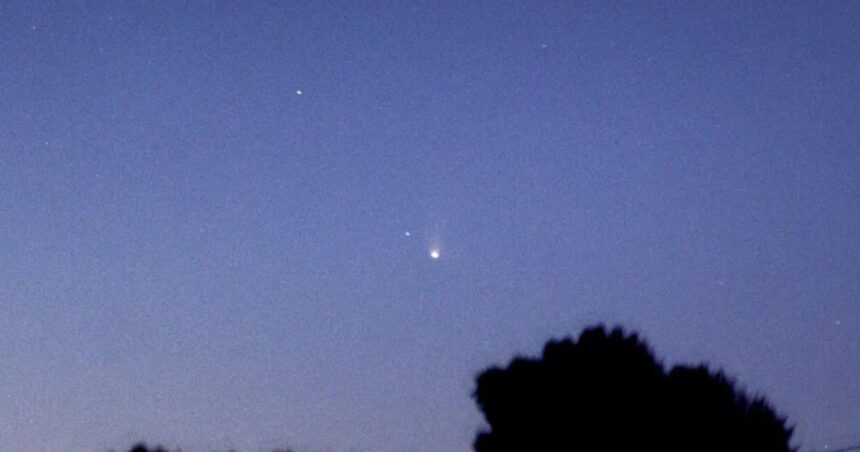This is the question on every stargazer’s mind. As we approach September 27, 2024, the comet is set to make its closest approach to the sun, known as perihelion.
Comet Tsuchinshan-ATLAS, officially named C/2023 A3, was discovered in January 2023 by the Purple Mountain Observatory in China and later confirmed by the Asteroid Terrestrial-impact Last Alert System (ATLAS) in South Africa. Initially thought to be an asteroid, it was soon identified as a comet. Since then, astronomers have been eagerly tracking its journey.
What Makes Comet Tsuchinshan-ATLAS Special?
Comet Tsuchinshan-ATLAS is not just any comet. It has a unique trajectory and composition. When it was first discovered, it was a faint object far from the sun. However, its orbit suggested that it could become a bright object visible to the naked eye by the fall of 2024.
The Journey So Far
The comet’s journey has been nothing short of dramatic. In early July, there were concerns that Comet Tsuchinshan-ATLAS was disintegrating. Dr. Zdeněk Sekanina, a renowned comet expert, published a paper suggesting that the comet was breaking apart. He pointed out that the comet’s tail was composed of larger-than-normal particles, indicating fragmentation.
Despite these concerns, the comet has shown resilience. By mid-September, it was still intact and visible to astronomers. Australian comet observer Terry Lovejoy managed to photograph it on September 11, 2024, from Wellington Point, Queensland. This was a significant achievement, as the comet had been lost to most ground-based observers due to its proximity to the sun.

Will It Be Visible to the Naked Eye?
As Comet Tsuchinshan-ATLAS approaches perihelion on September 27, 2024, the big question remains: Will it be visible to the naked eye? The answer is hopeful but uncertain. The comet’s brightness has been increasing, and it is expected to be visible in the morning sky before dawn. However, its visibility will depend on several factors, including its distance from the sun and its continued structural integrity.
How to Spot the Comet
For those eager to catch a glimpse of Comet Tsuchinshan-ATLAS, here are some tips:
- Timing: The best time to see the comet will be in the early morning hours before dawn. As it gets closer to the sun, it will become more visible.
- Location: Look towards the eastern horizon. The comet will be rising in the east and moving westward.
- Equipment: While the comet may be visible to the naked eye, using binoculars or a small telescope will enhance your viewing experience.
- Weather: Clear skies are essential. Look at the weather report and pick a night when there won’t be many clouds.
The Science Behind Comets
Comets are fascinating celestial objects. They are made of stony material, dust, and ice. As they approach the sun, the heat causes the ice to vaporize, creating a glowing coma and a tail. The tail always points away from the sun due to the solar wind.
Comet Tsuchinshan-ATLAS is no exception. Its tail is expected to become more prominent as it gets closer to the sun. This is because the increased heat will cause more ice to vaporize, creating a brighter and longer tail1.
Historical Significance
Comets have always held a special place in human history. They have been seen as omens, harbingers of change, and objects of wonder. Comet Tsuchinshan-ATLAS is no different. Its journey through the solar system is a reminder of the dynamic and ever-changing nature of our universe.





